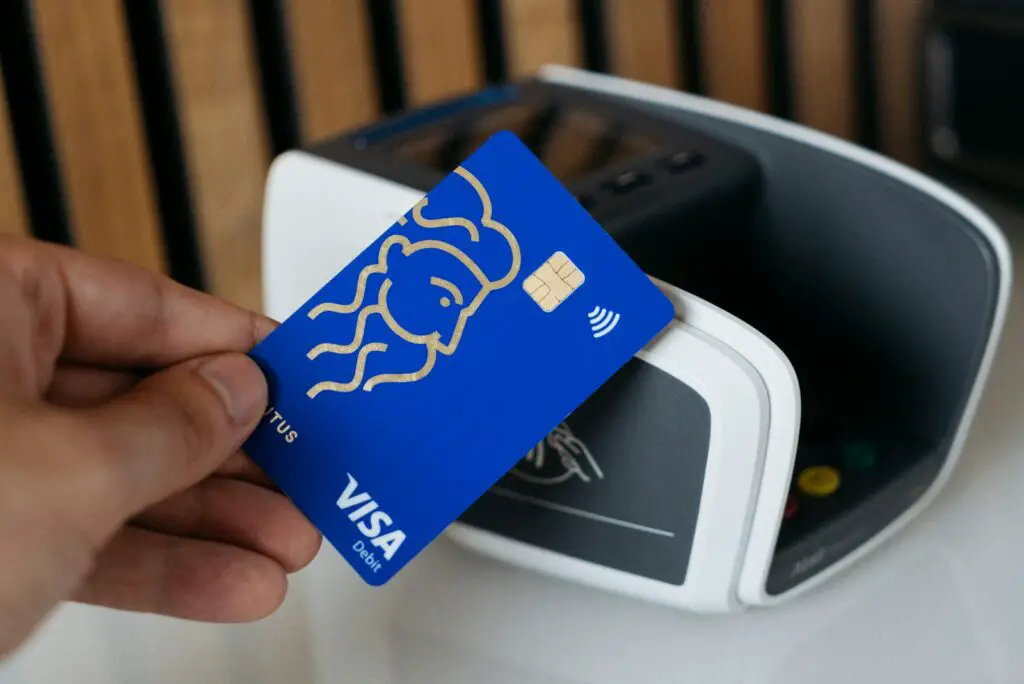Introduction to Traveling with a Large Group
Traveling with a large group can be an exciting but complex endeavor. It requires meticulous planning, seamless coordination, and effective communication to ensure a smooth and enjoyable journey for everyone involved.
Planning and Coordination
Before embarking on the trip, it’s crucial to establish a comprehensive plan. A few key elements must be addressed:
- Agree on a Destination: All group members should have a say in the destination to ensure everyone’s interests are considered.
- Set a Budget: Establish a budget that accommodates everyone’s financial situation. Factor in transportation, accommodation, food, and activities.
- Create an Itinerary: Develop a detailed itinerary, including travel times, lodging, meals, and activities. Distribute it to all participants for feedback.

Communication
Effective communication is vital for the success of the trip. Here are some strategies:
- Designate a Leader: Appoint a primary organizer to streamline decision-making and act as the main point of contact.
- Use Group Messaging Apps: Platforms such as WhatsApp or Slack can facilitate real-time communication, keeping everyone informed.
- Regular Meetings: Schedule periodic virtual or in-person meetings to discuss plans and address any concerns.
Travel Arrangements
Booking travel for a large group presents unique challenges. Consider the following:
- Group Discounts: Many airlines, hotels, and tour operators offer discounts for large groups. Take advantage of these deals to reduce costs.
- Flexible Booking: Look for options with flexible booking policies in case of changes. This flexibility can save money and stress.
- Transportation Coordination: Ensure that all group members are aware of travel arrangements. Provide clear instructions and confirmations.
Accommodation
Finding suitable lodging is another critical task:
- Group Accommodation: Look for properties that can comfortably accommodate the entire group, such as vacation rentals or hostels.
- Proximity to Attractions: Choose a location that minimizes travel time to key attractions and activities.
- Shared Spaces: Ensure there are communal areas where everyone can gather and socialize.
Food and Dining
Meal planning for a large group can be challenging but manageable:
- Pre-Booked Meals: Where possible, arrange pre-booked meals at restaurants to avoid long waits and ensure seating.
- Group Cooking: If staying in a place with a kitchen, consider group cooking sessions. They can be cost-effective and fun.
- Dietary Preferences: Be mindful of dietary restrictions and preferences within the group to ensure everyone is catered to.
Activities and Entertainment
Keeping everyone entertained is essential for a successful trip:
- Group Activities: Plan activities that everyone can enjoy, such as guided tours, group hikes, or team-building exercises.
- Flexibility: Allow downtime for individuals to explore personal interests or relax. This flexibility can prevent burnout and ensure everyone has a good time.
Through meticulous planning, clear communication, and thoughtful consideration of all group members’ needs, traveling with a large group can be a rewarding and memorable experience.
Choosing the Right Destination
Selecting an appropriate destination is crucial for the success of a group trip. Here are key considerations to keep in mind:
- Interests and Preferences:
- Conduct a survey among group members to understand their interests.
- Ensure the destination offers a mix of activities suitable for different preferences, such as adventure, relaxation, culture, and shopping.
- Accessibility:
- Choose a location with ample transportation options, including flights, trains, or buses.
- Consider the ease of local transportation, including public transit and shuttle services, for group members to get around.
- Accommodation Availability:
- Ensure the destination has a range of accommodation options that can comfortably house the entire group.
- Look for hotels, resorts, or rental properties that offer group discounts or packages.
- Budget:
- Estimate the cost of travel, accommodations, food, and activities at various destinations.
- Select a destination that aligns with the overall budget of the group members.
- Safety and Health:
- Research the safety conditions of potential destinations, including crime rates and political stability.
- Consider the availability of medical facilities and the requirement for any vaccinations or health precautions.
- Climate and Season:
- Check the weather conditions during the planned travel dates to ensure a comfortable experience.
- Avoid destinations prone to extreme weather conditions during the travel period.
- Activities and Attractions:
- Verify that the destination offers a variety of attractions and activities that appeal to the diverse interests of group members.
- Look for places with group-friendly activities such as guided tours, team sports, and cultural experiences.
- Legal and Visa Requirements:
- Review visa requirements for all group members if traveling internationally.
- Ensure compliance with any legal requirements, such as travel insurance or permits.
- Group-Friendly Destinations:
- Research destinations known for being group-friendly, with infrastructure and services catering to large parties.
- Seek recommendations and reviews from other groups who have traveled to the potential destinations.
By carefully considering these factors, organizers can select a destination that maximizes enjoyment, convenience, and safety for all group members.
Planning and Scheduling: Setting Expectations
Effective planning and scheduling are crucial for managing a large group. Clear expectations and detailed coordination can avoid confusion and ensure a smooth journey.
Pre-Trip Planning
- Destination Research: Thoroughly research the destination. Understand local attractions, transportation options, dining establishments, and accommodation facilities. Identify must-see landmarks and experiences suitable for the entire group.
- Visas and Documentation: Verify all necessary travel documentation, including visas and passports. Ensure every participant is aware of specific country requirements.
- Health and Safety: Check health advisories and safety recommendations. Inform group members about necessary vaccinations and health precautions.

Itinerary Development
- Define Activities: Develop a balanced itinerary catering to diverse interests. Include a mix of structured activities and free time. Ensure activities appeal to various age groups and preferences.
- Time Management: Allocate reasonable time for each activity. Factor in travel time and potential delays. Ensure there is enough time for meals and rest breaks to avoid fatigue.
- Backup Plans: Have contingency plans for potential disruptions. Identify alternative activities and routes in case of unforeseen circumstances such as bad weather or closures.
Group Communication
- Central Point of Contact: Designate a central point of contact for the group. This person will handle coordination, problem-solving, and communication.
- Regular Updates: Provide regular updates before and during the trip. Use group messaging apps or emails to keep everyone informed about plans and changes.
- Meet-Up Points: Establish clear meet-up points and times, especially after individual activities or free time. This ensures everyone reconvenes smoothly.
Budgeting and Payments
- Expense Tracking: Track expenses meticulously. Use budgeting tools to monitor spending and ensure adherence to the budget.
- Payment Plans: Set clear guidelines for shared costs and payment collection. Decide on shared expenses and how they will be divided among group members.
- Currency Management: Plan for currency exchange if traveling internationally. Ensure all members have access to adequate funds and understand local monetary systems.
“Setting realistic expectations and clear communication channels are imperative for a hassle-free group travel experience.”
Technology Utilization
- Travel Apps: Utilize travel apps for itinerary management, navigation, and communication. Apps can facilitate smooth coordination and real-time updates.
- Document Sharing: Use cloud storage solutions for sharing important documents such as itineraries, booking confirmations, and emergency contacts.
- Emergency Contacts: Compile an emergency contact list for all members. Include local emergency numbers and embassy contacts where applicable.
By establishing robust planning and scheduling practices, group trips become more enjoyable and stress-free.
Accommodation Options: Bigger is Better
Finding accommodation for a large group can be challenging, but larger spaces can often provide more comfort and improve the overall experience. To ensure a smooth stay, consider the following options:

Vacation Rentals
Renting a large house or villa can be the ideal solution for group travel. Platforms like Airbnb and Vrbo offer extensive listings suitable for big groups. These homes often include:
- Multiple bedrooms and bathrooms
- Fully-equipped kitchens
- Common areas like living rooms and dining spaces
- Outdoor amenities such as gardens, pools, or patios
Hotels with Suites
Many hotels offer suite options that cater to bigger groups. Suites often come with:
- Multiple rooms within a single unit
- Separate living and sleeping areas
- Kitchenettes or full kitchens
- Additional perks like complimentary breakfast or social hours
Resort Stays
Resorts can offer multiple accommodation types under one roof, such as:
- Two- or three-bedroom units
- Adjoining rooms for families or friends
- All-inclusive meal and activity options
Hostels or Dormitory-Style Lodging
For budget-friendly options, hostels or dormitory-style lodgings may be preferable. These venues usually feature:
- Shared living spaces
- Affordable pricing
- Community kitchens and lounges
Group Discounts
Many lodging options provide group discounts, which can make the stay more affordable. To take advantage of these deals, look for:
- Direct bookings through the accommodation provider’s website
- Group travel booking websites
- Contacting the accommodation directly to inquire about special rates
Tips for Booking
To ensure the best experience, pay attention to:
- Location: Proximity to attractions and amenities is crucial.
- Reviews: Previous group customers can provide valuable insights.
- Amenities: Ensure the accommodation has necessary facilities like Wi-Fi, parking, and laundry services.
- Flexibility: Check policies on cancellations, changes, and special requests.
Choosing the right accommodation plays a vital role in the success of a group trip. Larger and well-equipped lodging options ensure everyone remains comfortable and engaged throughout the stay.
Group Transportation: How to Move Everyone
Efficient group transportation is essential for a smooth travel experience. Coordinating travel plans can be challenging, but several strategies ensure everyone arrives at their destination safely and on time.
Choosing the Right Mode of Transportation
Selecting the appropriate mode of transportation depends on the group’s size, budget, and destination.
- Charter Buses: Ideal for large groups, charter buses offer comfort and ample storage space. They are cost-effective and can be tailored to specific itineraries.
- Vans: For smaller groups or shorter distances, renting a van can be an economical option. Ensure the van has enough seating and storage for luggage.
- Shuttle Services: Hotels and airports often provide shuttle services. Booking a private shuttle ensures timely pick-ups and drop-offs.
- Trains: For groups traveling between cities, trains provide a scenic and relaxing journey. Booking group tickets in advance can secure discounts.
Coordinating Departure and Arrival Times
Synchronizing departure and arrival times is crucial to avoid confusion and delays.
- Itinerary Planning: Create a detailed itinerary outlining all transportation schedules. Share it with all group members to ensure everyone is informed.
- Meeting Points: Designate clear meeting points for both departures and arrivals. Ensure these locations are easily accessible and well-known to all travelers.
- Communication: Establish a communication plan. Utilize group chats or messaging apps to provide real-time updates and address any last-minute changes.
Booking and Reservations
Advance bookings guarantee availability and can often secure better rates.
- Bulk Discounts: Contact transportation providers to inquire about group rates or bulk discounts. Many companies offer reduced rates for larger groups.
- Online Reservations: Use online platforms to compare prices and book services. Ensure to check policies for cancellations and modifications.
- Documentation: Keep all reservation confirmations and receipts organized. Share copies with key group members for reference.
Considerations for Accessibility
Ensure transportation arrangements accommodate all group members, including those with specific needs.
- Wheelchair Access: Verify that vehicles are wheelchair accessible if needed. Request ramp access or designated seating when necessary.
- Dietary Needs: For long journeys, ensure that snacks and meals cater to various dietary restrictions.
- Health and Safety: Include first-aid kits and ensure knowledge of any medical issues within the group. Identify hospitals or clinics along the route.
Proper planning and attention to detail can make group transportation seamless and enjoyable.
Communication is Key: Staying in Touch
Effective communication can make or break a group travel experience. With a larger group, coordinating activities, meal times, and transportation becomes more complex. Several strategies can enhance communication throughout the journey.
Digital Tools
- Group Messaging Apps: Utilize apps like WhatsApp, GroupMe, or Slack to keep everyone in the loop. These platforms support instant messaging, photo sharing, and even document sharing, making coordination easier.
- Shared Calendars: Google Calendar or other shared calendar apps can help track group activities, ensuring everyone is aware of scheduled events and any changes.
- Location Sharing: Apps like Google Maps or Find My Friends can help group members locate each other in unfamiliar places. Enabling location sharing can prevent anyone from getting lost.
Pre-Trip Planning
- Contact Lists: Compile a comprehensive contact list including phone numbers, email addresses, and social media handles. Distribute this list to all group members before departure.
- Emergency Plan: Establish a clear plan for emergencies, including designated meeting points and emergency contacts. Ensure everyone understands the protocol.
Regular Check-Ins
- Morning and Evening Briefings: Hold briefings at the start and end of each day to go over plans, answer questions, and address any concerns. This helps maintain clarity and cohesion.
- Designated Group Leaders: Assign specific leaders responsible for different aspects of the trip such as transportation, meals, or activities. These leaders serve as points of contact for their respective areas.
Adapting to Changing Circumstances
- Flexibility: Encourage a mindset of flexibility among group members. Plans can change, and being adaptable ensures smoother handling of unforeseen circumstances.
- Feedback Loop: Establish a system for ongoing feedback. Regularly solicit input from group members to identify any issues or areas for improvement.
Staying in touch efficiently not only facilitates logistical coordination but also fosters a sense of unity and shared responsibility. Proper communication can significantly enhance the travel experience, making it more enjoyable and less stressful for everyone involved.
Food and Dining: Catering to a Crowd
When planning meals for a large group, ensuring everyone’s dietary needs and preferences are met can be a complex task. Pre-trip preparation is key: gather detailed information regarding all participants’ dietary restrictions, allergies, and preferences. This information is vital for meal planning, whether dining out or preparing food in a rented accommodation.
For dining out, make reservations well in advance, as many restaurants might not accommodate spontaneous large groups. Contact the restaurant ahead of time to discuss seating arrangements and to confirm their ability to handle dietary restrictions.
Consider the following strategies:
- Buffet Style Dining: Opt for restaurants that offer buffet services where attendees can choose foods that match their personal dietary needs.
- Family-Style Meals: Select establishments serving food in large portions shared amongst the group to create a communal dining experience.
Preparing food independently requires careful planning and organization. Create a meal schedule and assign tasks to various group members to ensure efficient use of kitchen space and resources. Consider creating a shopping list that accounts for bulk purchases to minimize costs.
Essential steps for self-catering:
- Menu Planning: Develop a detailed meal plan accounting for all meals and snacks.
- Bulk Shopping: Purchase items in bulk to save money; chain supermarkets or wholesale clubs are ideal for this purpose.
- Meal Prep: Prepare and cook as many items in advance as possible. Store these items properly for freshness.
- Equipment Check: Ensure the accommodation kitchen is well-equipped with essential items like pots, pans, utensils, and storage containers.
For a harmonious dining experience, communal areas should be properly organized to accommodate the entire group. Utilize available space effectively through staggered meal times if the dining area is small.
Setting guidelines for clean-up and dishwashing can prevent confusion and maintain hygiene. Rotating responsibilities among group members ensures that the workload is shared evenly. Having a clear plan and open lines of communication will contribute significantly to the success of food and dining logistics for a large group.
Activities and Entertainment: Keeping Everyone Engaged
Engaging a large group during travel requires diverse activities that cater to various interests and age groups. Proper planning ensures that everyone remains entertained and the journey is enjoyable for all participants.
Group Activities
- City Tours:
- Organize guided city tours that highlight popular attractions, historical landmarks, and cultural hotspots.
- Utilize audio guides or personnel to provide information, allowing everyone to experience the tour at their own pace.
- Interactive Workshops:
- Schedule interactive workshops, such as cooking classes, art sessions, or dance lessons, that appeal to diverse group members.
- Ensure the workshops are suitable for different skill levels, accommodating both beginners and advanced participants.
- Outdoor Adventures:
- Plan outdoor activities like hiking, biking, or water sports, providing options tailored to different fitness levels and interests.
- Engage a professional guide for safety and to enhance the group’s experience with local knowledge.
In-Transit Entertainment
- Games and Challenges:
- Include board games, card games, and trivia challenges to keep everyone entertained during long transit hours.
- Organize group contests, offering small rewards to add a competitive edge and foster team spirit.
- Movies and Shows:
- Set up a portable movie or show viewing, ensuring a diverse selection of genres to cater to varied tastes.
- Use headphones and individual screens to allow personal choice without disturbing others.
Technology Integration
- Travel Apps:
- Encourage the use of travel apps that offer self-guided tours, local language lessons, and real-time updates on attractions.
- Provide recommendations for apps that facilitate coordination, such as group messaging, itinerary sharing, and location tracking.
- Social Media Engagement:
- Create a private social media group or chat where members can share photos, experiences, and updates.
- Enable group interactions, fostering a sense of community and allowing everyone to stay connected.
Considerations for All Age Groups
- For Young Children:
- Provide age-appropriate entertainment such as coloring books, interactive story apps, and playful activities during downtime.
- For Teenagers:
- Incorporate adventure sports, tech-savvy games, and social media-driven activities to ensure their engagement.
- For Adults:
- Offer a variety of relaxed yet engaging options, such as wine tastings, historical tours, or cultural performances.
Properly planned activities and entertainment can enhance the travel experience for a large group, ensuring that everyone stays engaged and satisfied throughout the journey. Tailoring the offerings to the group’s diverse interests and needs is key.
Budgeting and Financial Planning
Effective budgeting and financial planning are crucial when organizing a trip for a large group. Establishing clear financial expectations and planning in advance can help manage costs and avoid misunderstandings. The following strategies can assist in creating a robust financial plan for group travel.
First, define the total budget. Determine the overall amount that the group is willing to spend, taking into account the diversity of financial capabilities among group members. Open discussions about budget limitations can prevent overspending and foster group consensus.
Cost Breakdown
A detailed cost breakdown is essential. Key areas to consider include:
- Accommodation: Seek bulk booking discounts, consider vacation rentals or hostels, or arrange shared rentals for better affordability.
- Transportation: Evaluate the cost of flights, buses, trains, or car rentals. Group discounts or chartered transport options can reduce expenses.
- Meals: Plan for group meals, including grocery budgets for self-catering or dining out costs.
- Activities and Attractions: Allocate funds for guided tours, entrance fees, and special activities. Group rates often apply here.
Expense Tracking
Utilize expense tracking tools and apps to monitor and divide costs among group members. Apps such as Splitwise or Tricount facilitate real-time tracking and ensure fair distribution of shared expenses.
Contingency Fund
Include a contingency fund in the budget to handle unexpected expenses like medical emergencies, last-minute changes, or additional activities. A small buffer can smooth out financial surprises.
Payment Collection
Decide on a method for collecting and managing money. Options include:
- Centralized Collection: Appoint a single person to collect and manage funds.
- Individual Payments: Each member pays their share directly to service providers.
- Shared Bank Account: Open a dedicated account for group expenses, ensuring transparency.
Fundraising Ideas
If the budget is tight, consider fundraising ideas like:
- Group Fundraisers: Organize events such as bake sales or car washes.
- Crowdfunding: Use platforms like GoFundMe to raise additional funds.
By following these guidelines, groups can enjoy a well-organized trip, minimizing financial stress and maximizing enjoyment.
Packing and Preparing for the Journey
When traveling with a large group, meticulous packing and preparation can be the deciding factors between a seamless trip and a chaotic experience. Allocating tasks ahead of time is crucial. Assign one person as the packing coordinator to oversee the organization of shared luggage, while another person manages individual needs. Ensure everyone receives a checklist detailing essential items to bring, including clothing, toiletries, and necessary travel documents.
Opt for compact and uniform luggage for efficient handling. Group members should pack light, prioritizing versatile clothing items suitable for different weather conditions. Include weather-appropriate accessories like hats, scarves, or umbrellas. For electronics, suggest multi-port chargers to minimize the number of devices and save space.
To avoid last-minute packing chaos, encourage the group to start packing at least a week in advance. This timeline allows enough opportunity to purchase any forgotten items. Set up a shared digital document where everyone can list what they have packed to avoid duplication or omission of essential items.
For shared items, divide the list into categories such as medical supplies, snacks, and entertainment, and designate specific group members to be responsible for each category. Essential shared items might include a first-aid kit, extra chargers, power banks, and water bottles. Keep in mind any special needs such as dietary restrictions or medical conditions to ensure appropriate accommodations are packed.
Labeling luggage is a crucial step in preventing confusion and loss. Use color-coded tags or personalized keychains to easily identify bags. Make sure everyone’s contact information is attached to their luggage for easy recovery in case items get misplaced.
When planning transportation for a large group, space and efficiency are key factors. Consider chartering a bus or renting a large van to accommodate everyone comfortably. If flying, double-check the luggage policies of the airline to ensure compliance and avoid extra fees. Pre-arrange transportation to and from the airport or other transit points to streamline the process.
Brief all group members on security processes, especially for international travel. Inform them about prohibited items, liquid limits, and other regulations. Make sure everyone has their documents, such as tickets, passports, and visas, easily accessible. Arrange a central spot for document copies in case of emergencies.
By following these meticulous planning steps, the group can significantly reduce stress and potential issues during the journey.
Emergency Preparedness and Safety Tips
When traveling with a large group, planning for emergencies and ensuring everyone’s safety becomes paramount. Here are key tips to help maintain safety and manage emergencies effectively:
Create a Communication Plan
- Emergency Contacts: Establish a clear list of emergency contacts for each group member.
- Communication Devices: Ensure all members have operational phones or radios.
- Meeting Points: Designate specific meeting points in case someone gets separated.
Pack a First Aid Kit
- First Aid Supplies: Include bandages, antiseptics, pain relievers, and any special medication group members may need.
- Training: Ensure at least one group member knows basic first aid and CPR.
Health and Medical Precautions
- Medical Information: Keep a record of any allergies or medical conditions within the group.
- Vaccinations: Check and update required vaccinations based on the destination.
Safety During Travel
- Buddy System: Pair members to watch out for each other throughout the trip.
- Headcounts: Perform regular headcounts, especially when moving from one location to another.
- Safety Briefings: Conduct briefings on risks and safety protocols relevant to the destination.
Emergency Supplies
- Emergency Kit: Carry an emergency kit with flashlights, batteries, maps, and essential tools.
- Food and Water: Bring extra food and water supplies to last at least 24 hours.
Local Safety Awareness
- Local Emergency Numbers: Memorize or write down local emergency numbers.
- Cultural Practices: Be aware of cultural norms and practices to avoid misunderstandings or conflicts.
- Geographic Awareness: Understand the layout of the destination and identify safe areas.
Transportation Safety
- Vehicle Checks: Regularly check the condition of all vehicles used in travel.
- Driver Rotation: Ensure drivers are well-rested to avoid fatigue-related incidents.
- Emergency Exits: Familiarize all members with emergency exits in accommodation and transport.
Documentation and Identification
- Copies of Identification: Make copies of passports, visas, and other identification documents.
- Travel Insurance: Ensure everyone has comprehensive travel insurance that covers emergencies.
Weather Preparedness
- Weather Updates: Monitor weather forecasts and plan accordingly.
- Appropriate Clothing: Bring appropriate clothing for unexpected weather changes.
By adhering to these safety tips and emergency preparedness guidelines, large groups can navigate potential challenges more effectively and ensure a safer, more enjoyable journey.
Etiquette and Group Dynamics
Traveling with a large group necessitates understanding and respecting the dynamics involved. Balancing individual preferences and group cohesiveness is paramount. Key elements include:
Communication
- Establish clear communication channels.
- Use group chats or messaging apps for real-time updates.
- Schedule regular group meetings to discuss plans.
Punctuality
- Emphasize the importance of being on time.
- Set specific deadlines for meetings and activities.
- Assign timekeepers to keep everyone on schedule.
Conflict Resolution
- Address conflicts immediately to prevent escalation.
- Encourage open and respectful dialogue.
- Implement a democratic voting system for decision-making.
Shared Responsibilities
- Leadership Roles: Rotate leadership roles to distribute responsibilities.
- Task Assignments: Assign specific tasks to different members, such as navigating, meal planning, or documenting the trip.
- Resource Management: Share financial responsibilities and keep a joint budget.
Respect for Personal Space
- Recognize the need for individual downtime.
- Plan activities allowing for both group participation and personal exploration.
- Be considerate of others’ preferences and boundaries.
Inclusivity
- Ensure everyone feels included in activities and decisions.
- Be mindful of differing abilities, interests, and comfort levels.
- Encourage input from all group members.
Decision-Making
- Consensus Building: Aim to reach a consensus for major decisions.
- Voting Systems: Use voting for contentious issues where a consensus cannot be reached.
- Flexibility: Maintain a flexible itinerary to accommodate changing group dynamics.
Health and Safety
- Prioritize group safety by sharing health information discreetly.
- Assign a first-aid point person.
- Keep emergency contacts and insurance details accessible to all.
Utilizing these strategies can significantly enhance the travel experience, ensuring a harmonious and enjoyable journey for everyone involved. Proactive planning and mutual respect are vital when navigating the complexities inherent in group travel.
Tech Tools and Apps for Group Travel
Utilizing technology can significantly improve the efficiency and enjoyment of group travel. Various apps and tools are available to coordinate logistics, communicate, and manage tasks. Here are some recommended tech solutions:
Coordination and Planning
- Google Sheets: An invaluable tool for collaborative planning. Allows real-time updates to itineraries, budgets, and task lists.
- Trello: Ideal for project management, it can organize trip ideas, assign tasks, and track progress through boards and cards.
- TripIt: Automatically generates a master itinerary by syncing with travel confirmation emails. Ensures everyone is on the same page.
Communication
- WhatsApp: Provides a platform for instant messaging and group calls. Ideal for fast and reliable communication among group members.
- Slack: Useful for larger groups needing organized communication channels. Supports thread discussions, file sharing, and integrations with other tools.
- Messenger: Facilitates seamless integration with Facebook events and group chats. Good for staying connected before and during the trip.
Navigation
- Google Maps: Offers excellent features such as real-time traffic updates, offline maps, and personalized recommendations. Essential for navigating unfamiliar locations.
- Citymapper: Tailored for urban travel, it integrates public transit options, walking routes, and taxi services to provide comprehensive navigation solutions.
- Waze: Crowd-sourced information helps avoid traffic jams and find the fastest routes, ensuring timely arrivals at destinations.
Expense Management
- Splitwise: Simplifies the tracking and splitting of group expenses. Keeps a record of who owes whom and offers payment integration with various platforms.
- TravelSpend: Tracks spending, manages budgets, and provides an overview of expenses categorized by type and user. Helpful for avoiding financial conflicts.
- Venmo: A widely-used peer-to-peer payment app that makes settling shared costs quick and effortless.
Booking and Reservations
- Airbnb: Facilitates finding and booking lodgings suitable for groups. Offers filters for amenities and locations tailored to group needs.
- Booking.com: Comprehensive for researching, comparing, and booking accommodations. Often includes group discounts and a large selection of properties.
- OpenTable: Useful for making restaurant reservations. Allows booking for large groups and accessing reviews and ratings.
Leveraging these tech tools and apps can greatly enhance the group travel experience by streamlining planning, improving communication, and efficiently managing logistics. By integrating these solutions, groups can focus more on enjoying their journey rather than worrying about organizational hurdles.
Case Studies and Real-life Examples
Corporate Retreat: Efficient Coordination
A technology company organized a 50-person retreat. They employed a professional travel agency to handle logistics. Key strategies included:
- Booking charter buses for transportation.
- Using group booking discounts for accommodations.
- Creating a detailed itinerary accessible via mobile app.
This coordination allowed employees to focus on team-building activities rather than travel logistics.

Family Reunion: Balancing Flexibility and Structure
A large family of 30 members spanning three generations planned a reunion. They utilized the following methods:
- Designating family leaders to manage different aspects such as accommodation, transport, and activities.
- Booking vacation homes with ample space and amenities instead of multiple hotel rooms.
- Ensuring a flexible schedule to account for the varying interests and stamina of different age groups.
This balanced approach ensured that all relatives enjoyed their time together while having the freedom to explore individually.
Friends’ Adventure Trip: Cost-sharing and Decision-making
A group of 15 friends planned a multi-city European adventure. They addressed potential challenges by:
- Establishing a shared budget for common expenses and utilizing cost-tracking apps.
- Voting on destinations and activities to ensure majority satisfaction.
- Reserving group tours and activities to enjoy attractions without the hassle of individual ticketing.
This strategy improved group cohesion and minimized financial disputes.
Sports Team: Time Management and Consultation
A high school sports team coordinated a tournament trip involving 20 players and 5 coaches. Effective measures included:
- Setting strict timelines for departure and check-ins.
- Consulting all team members on room-sharing arrangements.
- Including downtime in the schedule for relaxation and recreation.
These actions helped the team manage their time efficiently and maintain high morale throughout the journey.
Nonprofit Group: Mission-focused Planning
A nonprofit organization arranged a trip for 40 volunteers to an international service site. Their key tactics comprised:
- Partnering with local organizations for on-ground support.
- Ensuring comprehensive travel insurance for all participants.
- Conducting pre-trip meetings to discuss roles and responsibilities.
This meticulous planning allowed volunteers to focus on their mission without worrying about travel complications.
School Field Trip: Safety and Engagement
A middle school organized an educational field trip for 60 students and 10 chaperones. Key practices included:
- Assigning small groups of students to each chaperone.
- Using wristbands or lanyards for easy identification.
- Planning engaging activities to maintain students’ interest.
This careful organization ensured students’ safety and learning engagement during the trip.
Final Thoughts and Conclusion
Traveling with a large group requires meticulous planning and coordination to ensure a smooth and enjoyable journey for all participants. While the logistics can be daunting, implementing effective strategies can make the experience memorable and hassle-free.
First and foremost, detailed planning cannot be overstressed. This includes securing accommodations well in advance, arranging transportation that can comfortably accommodate everyone, and planning activities that cater to various interests within the group. It’s also vital to establish clear communication channels to ensure everyone is on the same page.
Delegating responsibilities and assigning roles can significantly aid in managing the group. This can involve designating a person to handle finances, another to oversee transportation, and others to organize daily activities. Ensuring that everyone knows their role can reduce confusion and prevent last-minute scrambles.
It’s equally crucial to maintain a flexible itinerary. While having a structured plan is important, allowing some free time for spontaneous activities can enhance the overall travel experience. Respecting individual preferences and permitting time for small group or solo activities can cater to diverse interests within the group.
When it comes to meals, group dining can be one of the most enjoyable aspects of the journey. Pre-booking restaurants that can accommodate large groups or using meal-planning services can help manage time efficiently. For international trips, understanding local customs and cuisines can add an enriching cultural dimension to the travel experience.
Budgeting is another critical factor. Agreeing on a budget early in the planning stages can prevent financial strain and ensure that all group members are comfortable with the expenses involved. Utilizing collective funds for group activities and sharing costs for common expenses can simplify financial management.
Finally, unexpected events can disrupt even the best-laid plans. Preparing for potential issues with contingency plans and having travel insurance can mitigate risks and provide peace of mind.
“Traveling with a large group is about harmony, mutual respect, and shared experiences. Through meticulous planning and open communication, even the most complex trips can become enjoyable adventures.”


Leave a Reply